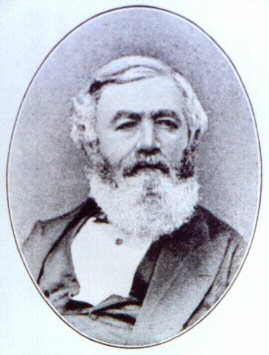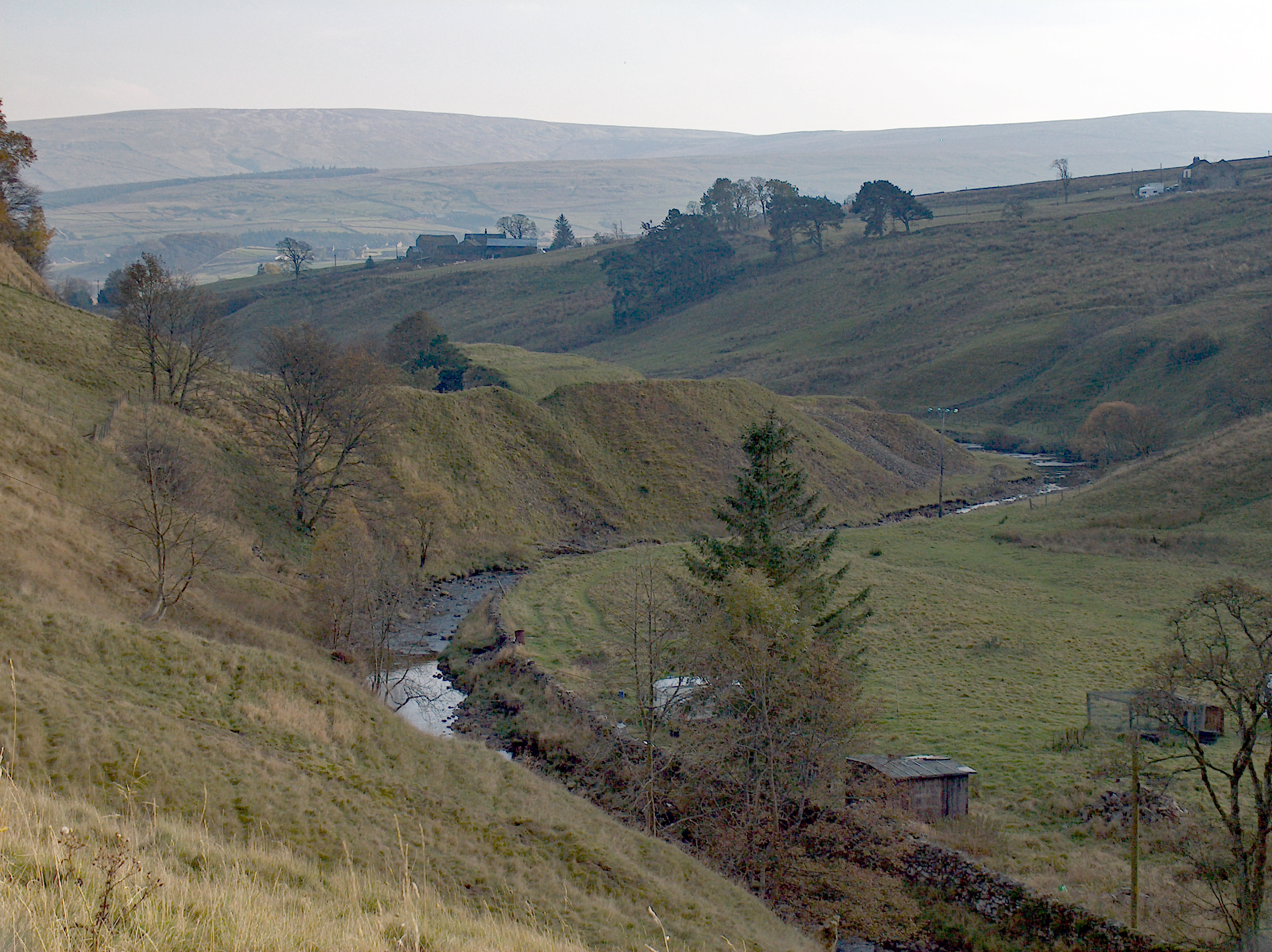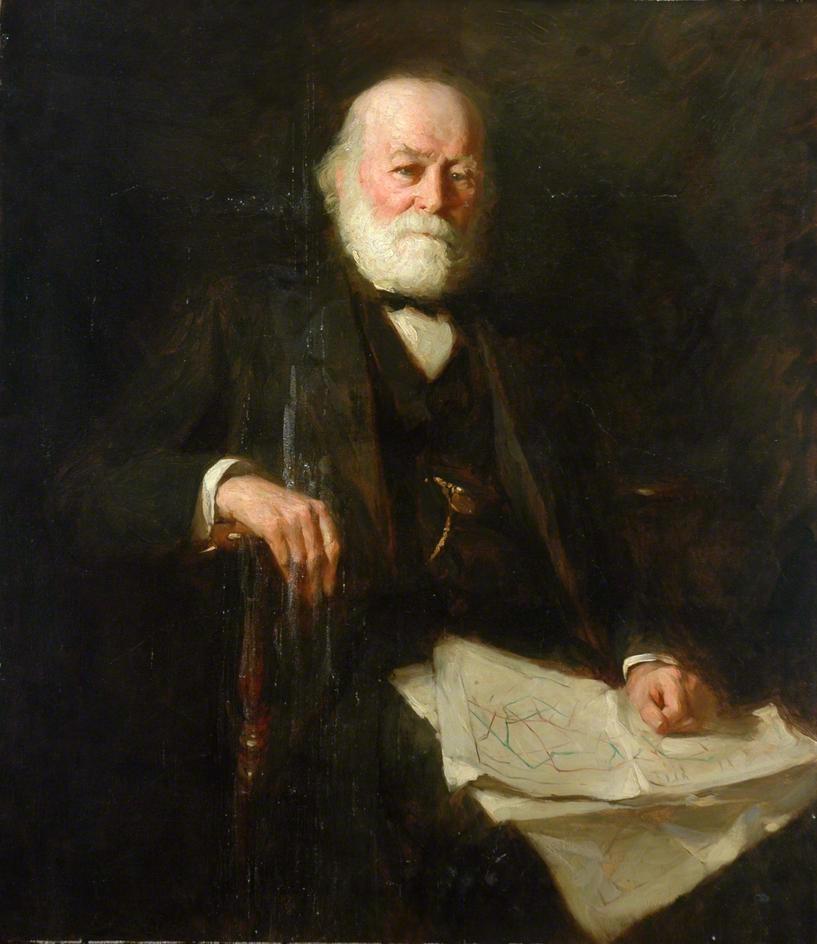|
Bolckow Vaughan
Bolckow, Vaughan & Co., Ltd was an English steelmaking, ironmaking and mining company founded in 1864, based on the partnership since 1840 of its two founders, Henry Bolckow and John Vaughan (ironmaster), John Vaughan. The firm drove the dramatic growth of Middlesbrough and the production of coal and iron in the north-east of England in the 19th century. The two founding partners had an exceptionally close working relationship which lasted until Vaughan's death. By 1907, Bolckow and Vaughan was possibly the largest producer of pig iron in the world. The firm failed to modernise at the start of the 20th century, and was closed in 1929. History Origins, 1840–51 In 1840, Henry Bolckow (1806–1878) and John Vaughan (Ironmaster), John Vaughan (1799–1868) set up in business in Middlesbrough to make iron. They lived side by side in two town houses, the Cleveland Buildings, about away from their ironworks which were on Vulcan Street, and they married a pair of sisters, which ... [...More Info...] [...Related Items...] OR: [Wikipedia] [Google] [Baidu] |
Blast Furnace
A blast furnace is a type of metallurgical furnace used for smelting to produce industrial metals, generally pig iron, but also others such as lead or copper. ''Blast'' refers to the combustion air being supplied above atmospheric pressure. In a blast furnace, fuel ( coke), ores, and flux (limestone) are continuously supplied through the top of the furnace, while a hot blast of (sometimes oxygen enriched) air is blown into the lower section of the furnace through a series of pipes called tuyeres, so that the chemical reactions take place throughout the furnace as the material falls downward. The end products are usually molten metal and slag phases tapped from the bottom, and flue gases exiting from the top. The downward flow of the ore along with the flux in contact with an upflow of hot, carbon monoxide-rich combustion gases is a countercurrent exchange and chemical reaction process. In contrast, air furnaces (such as reverberatory furnaces) are naturally aspirated, usu ... [...More Info...] [...Related Items...] OR: [Wikipedia] [Google] [Baidu] |
Eston
Eston is a former industrial town in the Redcar and Cleveland unitary area of North Yorkshire, England. It is part of Greater Eston, which includes the outlying settlements of Grangetown, North Yorkshire, Grangetown, Normanby, Redcar and Cleveland, Normanby, South Bank, Middlesbrough, South Bank, Teesville and part of Ormesby. Demographics The local authority ward covering the area (as well as Lackenby, Lazenby and Wilton, Redcar and Cleveland, Wilton) had a population of 7,005 at the 2011 United Kingdom census, 2011 census. History The land around Eston has been occupied since 2400 BC. The 1850 discovery of ironstone in Eston Hills by industrialist John Vaughan (Middlesbrough), John Vaughan and mining engineer John Marley (mining engineer), John Marley saw Eston develop from a small farming settlement in 1850 to a thriving mining town. Miners' cottages, although altered, can still be seen in parts of Eston. The mining history of Eston was the subject of ''A Century in Ston ... [...More Info...] [...Related Items...] OR: [Wikipedia] [Google] [Baidu] |
Weardale
Weardale is a dale, or valley, on the east side of the Pennines in County Durham, England. Large parts of Weardale fall within the North Pennines Area of Outstanding Natural Beauty (AONB) – the second-largest AONB in England and Wales. The upper dale is surrounded by high fells (up to O.D. at Burnhope Seat) and heather grouse moors. The River Wear flows through Weardale before reaching Bishop Auckland and then Durham, meeting the sea at Sunderland. The Wear Valley local government district covered the upper part of the dale, including Weardale, between 1974 and 2009, when it was abolished on County Durham's becoming a unitary authority. (From 1894 to 1974 there was a Weardale Rural District.) Upper Weardale is in the parliamentary constituency of North West Durham. The dale's principal settlements include St John's Chapel and the towns of Crook, Stanhope and Wolsingham. Local climate Weardale's winters are typically harsh and prolonged with regular snow, nowadays ... [...More Info...] [...Related Items...] OR: [Wikipedia] [Google] [Baidu] |
Cleveland, England
Cleveland is a land of hills and dales from the River Tees to Vale of Pickering, England. The name means "cliff-land". The area corresponds to the former Langbaurgh Wapentake. The North York Moors national park, established in 1952, covers part of it. A non-metropolitan county under the same name existed from 1974 to 1996 and there is ambiguity today between that county and the historic extent of the name. It is the ancestral home of Grover Cleveland, who was the 22nd and 24th President of the United States. Heritage Cleveland has a centuries-long association with the area from Middlesbrough to Pickering and Thirsk to Whitby, effectively the eastern half of Yorkshire's North Riding. Ralph, Archdeacon of Cleveland, was the area's first archdeacon recorded, before 1174. A Dukedom of Cleveland was first created in the 17th century. Metal The Cleveland Hills were key suppliers of the ironstone which was essential to running blast furnaces alongside the River Tees. Cl ... [...More Info...] [...Related Items...] OR: [Wikipedia] [Google] [Baidu] |
Limestone
Limestone is a type of carbonate rock, carbonate sedimentary rock which is the main source of the material Lime (material), lime. It is composed mostly of the minerals calcite and aragonite, which are different Polymorphism (materials science), crystal forms of calcium carbonate . Limestone forms when these minerals Precipitation (chemistry), precipitate out of water containing dissolved calcium. This can take place through both biological and nonbiological processes, though biological processes, such as the accumulation of corals and shells in the sea, have likely been more important for the last 540 million years. Limestone often contains fossils which provide scientists with information on ancient environments and on the evolution of life. About 20% to 25% of sedimentary rock is carbonate rock, and most of this is limestone. The remaining carbonate rock is mostly Dolomite (rock), dolomite, a closely related rock, which contains a high percentage of the mineral Dolomite (mine ... [...More Info...] [...Related Items...] OR: [Wikipedia] [Google] [Baidu] |
Colliery
Coal mining is the process of extracting coal from the ground or from a mine. Coal is valued for its energy content and since the 1880s has been widely used to generate electricity. Steel and cement industries use coal as a fuel for extraction of iron from iron ore and for cement production. In the United Kingdom The United Kingdom of Great Britain and Northern Ireland, commonly known as the United Kingdom (UK) or Britain, is a country in Northwestern Europe, off the coast of European mainland, the continental mainland. It comprises England, Scotlan ... and South Africa, a coal mine and its structures are a colliery, a coal mine is called a "pit", and above-ground mining structures are referred to as a "pit head". In Australia, "colliery" generally refers to an underground coal mine. Coal mining has had many developments in recent years, from the early days of men tunneling, digging, and manually extracting the coal on carts to large Open-pit mining, open-cut and ... [...More Info...] [...Related Items...] OR: [Wikipedia] [Google] [Baidu] |
Iron Mine
Iron is a chemical element; it has symbol Fe () and atomic number 26. It is a metal that belongs to the first transition series and group 8 of the periodic table. It is, by mass, the most common element on Earth, forming much of Earth's outer and inner core. It is the fourth most abundant element in the Earth's crust, being mainly deposited by meteorites in its metallic state. Extracting usable metal from iron ores requires kilns or furnaces capable of reaching , about 500 °C (900 °F) higher than that required to smelt copper. Humans started to master that process in Eurasia during the 2nd millennium BC and the use of iron tools and weapons began to displace copper alloys – in some regions, only around 1200 BC. That event is considered the transition from the Bronze Age to the Iron Age. In the modern world, iron alloys, such as steel, stainless steel, cast iron and special steels, are by far the most common industrial metals, due to their mechanical prop ... [...More Info...] [...Related Items...] OR: [Wikipedia] [Google] [Baidu] |
Teesside
Teesside () is an urban area around the River Tees in North East England. Straddling the border between County Durham and North Yorkshire, it spans the boroughs of Borough of Middlesbrough, Middlesbrough, Borough of Stockton-on-Tees, Stockton-on-Tees and Redcar and Cleveland. In 2011, it was the eighteenth largest urban area in the United Kingdom. It forms part of the wider Tees Valley area, which also includes the boroughs of Borough of Darlington, Darlington and Borough of Hartlepool, Hartlepool. Towns on Teesside include Middlesbrough, Stockton-on-Tees, Billingham, Redcar, Thornaby-on-Tees, and Ingleby Barwick. The local economy was once dominated by Manufacturing, heavy manufacturing until Deindustrialization, deindustrialisation in the latter half of the Late 20th Century, 20th century. History 1968–1974: County borough Before the county of Cleveland (county), Cleveland was created, the area (including Stockton-on-Tees) existed as a part of the North Riding of Yor ... [...More Info...] [...Related Items...] OR: [Wikipedia] [Google] [Baidu] |
South Bank, Middlesbrough
South Bank is a former industrial town in the Redcar and Cleveland borough in North Yorkshire, England on the south bank of the River Tees. It is east of Middlesbrough and south-west of Redcar. The town is served by railway station. The area forms part of the Teesside built-up area's Middlesbrough subdivision and is also a part of Greater Eston. Demographics Within Redcar and Cleveland, the South Bank ward had a population of 6,548 at the 2011 census. History Formerly known as "Tees Tilery", South Bank has a long history of steelmaking in the companies Bolckow Vaughan and Dorman Long, and shipbuilding at Smiths Dock Company. The area was also known by the nickname of "Slaggy Island" as it was surrounded by slag heaps. South Bank was historically part of the Township (England), township of Normanby, Redcar and Cleveland, Normanby in the ancient parish of Ormesby. A Local board of health#Local Government Act 1858, local government district covering the township was create ... [...More Info...] [...Related Items...] OR: [Wikipedia] [Google] [Baidu] |
Losh, Wilson And Bell
Losh, Wilson and Bell, later Bells, Goodman, then Bells, Lightfoot and finally Bell Brothers, was a leading Northeast England manufacturing company, founded in 1809 by the partners William Losh, Thomas Wilson (poet), Thomas Wilson, and Thomas Bell. The firm was founded at Newcastle-upon-Tyne with an ironworks and an alkali works nearby at Walker. The alkali works were the first in England to make Sodium carbonate, soda using the Leblanc process; the ironworks was the first to use Cleveland Ironstone Formation, Cleveland Ironstone, presaging the 1850s boom in ironmaking on Teesside. The so-called discoverer of Cleveland Ironstone, the mining engineer John Vaughan (ironmaster), John Vaughan, ran a rolling mill for the company before leaving to found the major rival firm Bolckow Vaughan. The other key figure in the company was Lowthian Bell, son of Thomas Bell; he became perhaps the best known ironmaster in England. As Bell Brothers, the firm continued until 1931, when it was tak ... [...More Info...] [...Related Items...] OR: [Wikipedia] [Google] [Baidu] |
Grosmont, North Yorkshire
Grosmont ( ; archaically spelt ''Growmond'') is a village and civil parish situated in Eskdale, North Yorkshire, Eskdale in the North York Moors National Park, within the boundaries of the county of North Yorkshire, England. From 1974 to 2023 it was part of the Borough of Scarborough, it is now administered by the unitary North Yorkshire Council. Grosmont Priory was established in the 12th century and closed during the dissolution of the monasteries in the 16th century. The village was established in the 1830s when the Whitby to Pickering Railway was built, and grew as a result of industrial iron ore extraction, and in the 1860s the development of an ironworks led to further growth. Up to at least the 1850s the village was known as Tunnel. History The River Esk, North Yorkshire, River Esk at Grosmont, west of the priory, was the crossing place of the ancient structure known as Wade's Causeway. A priory was established in the early 13th century, but no major settlements existed ... [...More Info...] [...Related Items...] OR: [Wikipedia] [Google] [Baidu] |










